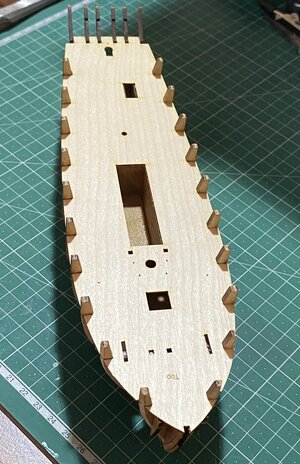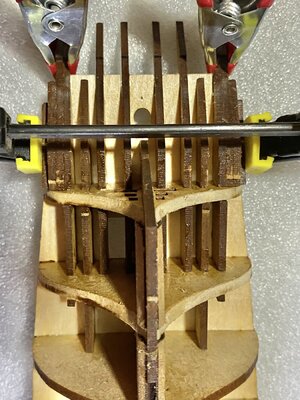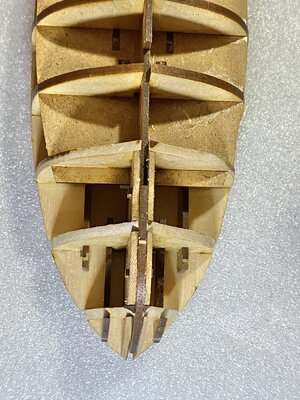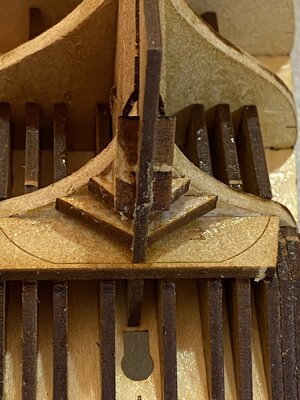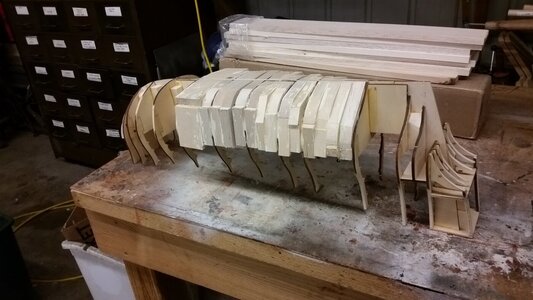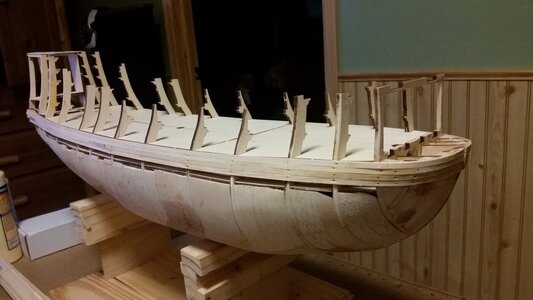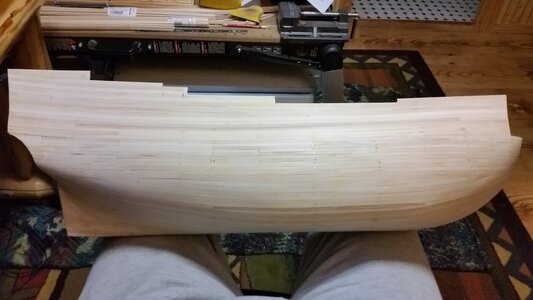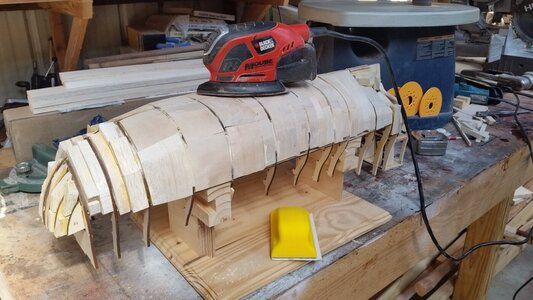There are still some rough corner edges that need to be faired in a bit on the tiny frame parts near the sternpost, but they won't offer much in the way of purchase for planking to stick to. That's why many modelers use balsa filling blocks between frames at the bow and stern to guarantee smooth planking curves in the hull form. Balsa is cheap and easy to shape. Using filler and multiple sanding sessions to get the hull shape proper is expensive in time spent. Lay the foundation well, and the rest takes care of itself. I hate cleaning up hard bends and flat spots (depressions) in the hull after planking.
The amount of cleanup tells you that the framing support was insufficient, which typically occurs in
most kits. There will always be some filler and sanding required, the amount depends on how the hull shape ends up after the first planking layer. If you go all the way with 100% balsa support of the planking, you do spend a great amount of time filling in custom cut balsa block and sanding the hull before laying planks, but you get a near perfect hull shape after the first planking layer.
Example of full balsa fill:
View attachment 393593
View attachment 393592
Sexy curves:
View attachment 393591






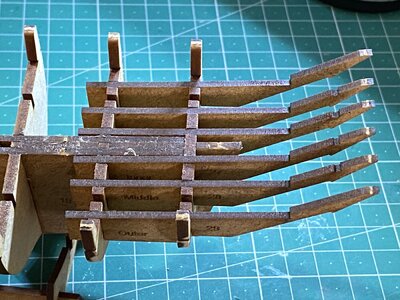
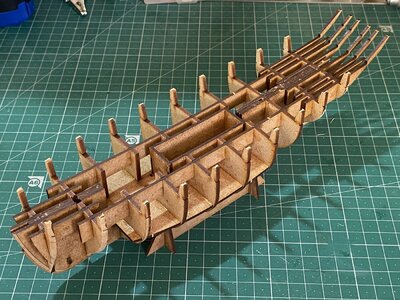

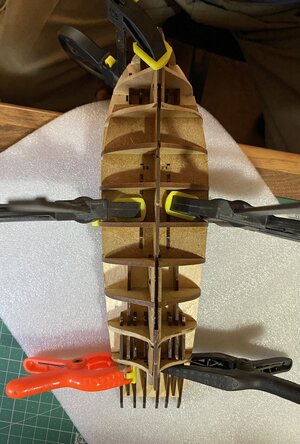
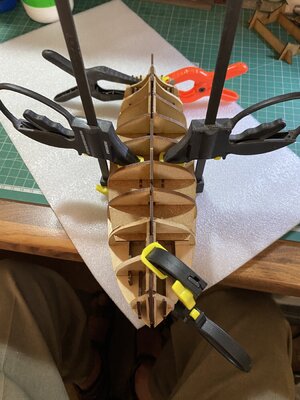
 folks, next stage stern framework supports fitted. I was tempted to carry on with the pieces that go beneath, but decided I'd be happier leaving this stage to dry. The whole structure is now feeling a lot more solid and the sub-deck certainly makes me feel as though I'm getting somewhere .
folks, next stage stern framework supports fitted. I was tempted to carry on with the pieces that go beneath, but decided I'd be happier leaving this stage to dry. The whole structure is now feeling a lot more solid and the sub-deck certainly makes me feel as though I'm getting somewhere .